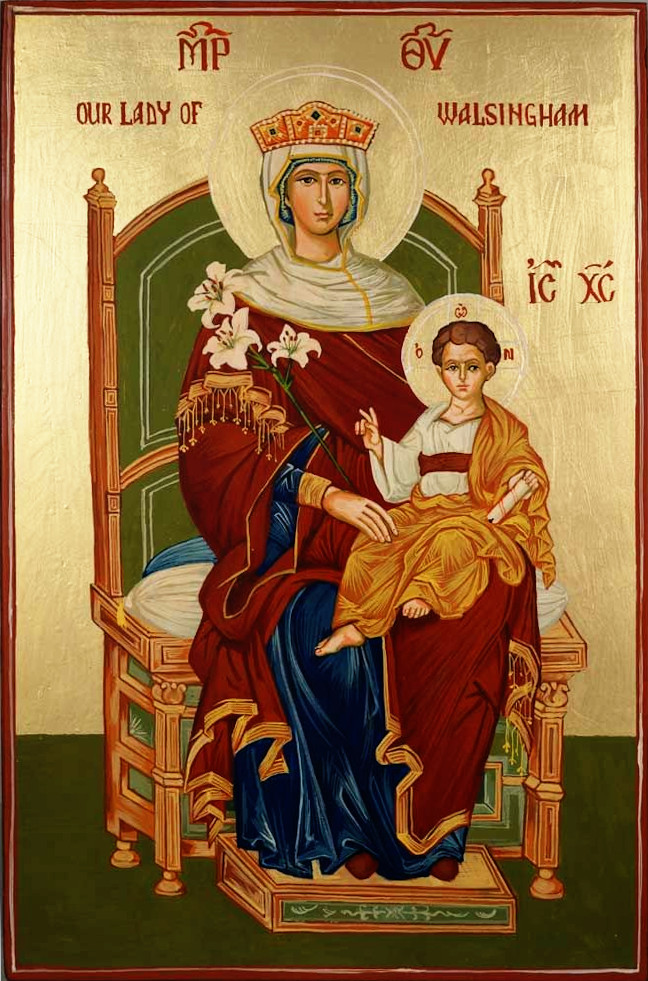09 August 2020
Venerable Platonida, Anchoress of Revda in Sverdlovsk
The ninth of August – the twenty-seventh of July on the Old Calendar – in the Orthodox Church is the feast-day of a mysterious, but highly-revered, anchoress of the eighteenth century who lived in the southern Ural Mountains, near Revda in the Sverdlovsk oblast, some ten or twelve kilometres outside the village of Krasnoyar. She is closely associated with the Tatar people to whom she likely belonged, and also with the Old Believers, though Saint Platonida also enjoys a significant folk-cultus among the canonical Orthodox faithful. Her holy well is the site of pilgrimage and the waters have healing properties.
Saint Platonida [Rus. Платонида] was probably named for the Syrian abbess Saint Platōnis of Nisibis, who is also called Platonida in Slavic and English sources. Little is actually known for certain about her life, though there are roughly a dozen legends about her and her holy well in the Ural Mountains.
The most commonly-heard one is that she was a member of the Kazan Tatar people, born to a Muslim family. The young girl grew curious about the principles of the Christian faith and grew to love Christ and to secretly believe in His death and resurrection. Her parents arranged for her to marry a Muslim man from her own village, and for some time she meekly agreed, unwilling to disobey her parents. But, as our Saviour Himself said in the Gospel of Saint Matthew, ‘He that loveth father or mother more than me is not worthy of me: and he that loveth son or daughter more than me is not worthy of me.’ On the very eve of her wedding, the young Tatar girl escaped from the village of her birth, and after some wandering came upon a small secluded convent of Orthodox nuns.
Spending some time among the nuns, she grew to love and to trust them, and she asked to be baptised among them into the Church. This was done lawfully, and at length she also decided to devote herself to holy virginity, taking the monastic name which belonged to the Syrian abbess. Saint Platonida lived and worked and prayed among these nuns for several years, after which time she approached the abbess and begged her leave to find some desert place where she might make an anchorage for herself to live in holy solitude. The abbess agreed, and Saint Platonida went into the Ural Mountains, and there built herself a cell among the thick forests south of the village of Revda. As she prayed, a well of pure fresh water sprang up beside her cell, and from this she was provided with the necessity of life. She spent the following years of her life in the spiritual exploits of the desert, struggling against the passions with the help of Christ.
Among her relatives there were those who took her apostasy and consecration to the virginal life as an affront against their honour, and they set off in search of her in order to kill her. Eventually they came upon her anchorage. However, on account of her holy life, a bear which lived in the forest came forward and protected the martyress with its body. The Muslims were fearful, but they killed the bear – and then Saint Platonida – from a distance with guns, as they feared to come near either the bear or her. In this way Saint Platonida gained the crown of victory in Christ.
Several other versions of her life exist. In another version of her life, Platonida was the youngest daughter of an Old Believer couple who lived in the Urals. When her parents died, her greedy older brothers, seeking to divide their inheritance between themselves and leave no dowry for their much sought-after sister, dropped her off at a monastery and left her there. Around forty years later, filled with remorse, Saint Platonida’s brothers returned to the monastery to visit her tomb and ask her forgiveness. As it turns out, she was not only not dead, she welcomed them cheerfully with open arms and forgave them in person. The brothers were astounded to find their sister not only alive, but looking just as young and beautiful as when they’d left her there (though she had become a nun in the meanwhile). It turned out that she was kept young and pretty by the water from the holy well nearby.
These are the traditional versions of her life that are best-attested. As we can see from these legends, we do not know what her birth-name was, what her surname was or even what village Saint Platonida was from. We know only her monastic name. What is known for sure from historical records, thanks to the efforts of local historian Vladimir Trusov, is that she lived in the latter half of the eighteenth century, and that the tomb and chapel in her memory were placed around the year 1785.
Saint Platonida’s body was found by some villagers from Revda, who buried her with due reverence and built a shrine over her tomb. This apparently happened on the feast-day of Saint Panteleēmōn, which subsequently became one of the days of her commemoration. This chapel stood until the Revolution, though it was dismantled forcibly by the Soviets under Stalin, and the pilgrims were dispersed or arrested. Even during Soviet times, however, Saint Platonida was still held in reverence, and several brave pilgrims made the journey each year to her tomb and well on the ninth of August, bathing in her holy spring and taking home with them as much of the healing water as they could carry. Despite the official condemnation and discouragement of her cultus, wondrous things did occur around her spring. A young boy who was lost in the woods for two weeks was later found alive, well and in his right wits by her holy well.
The water of her spring has been tested several times by chemists. It was found to have practically none of the usual dangerous heavy metals or toxins often found in groundwater; instead it was shown to have a high content of manganese and dissolved radon. These elements were thought to have some curative properties – though the therapeutic effects of radon baths are, to say the least, controversial. In any event, Saint Platonida is held in high reverence by Orthodox Christians and Old Believers alike, and despite the shrine having fallen into some disrepair in the last decade, it has since been restored, and pilgrims still come to her well in order to pray and to receive healing. Holy mother Platonida, ascetic and struggler in Christ in the remote Urals, pray unto Christ our God that our souls may be saved!
Labels:
Alash Orda,
history,
Holmgård and Beyond,
Pravoslávie,
prayers,
religious drama
Subscribe to:
Post Comments (Atom)















No comments:
Post a Comment